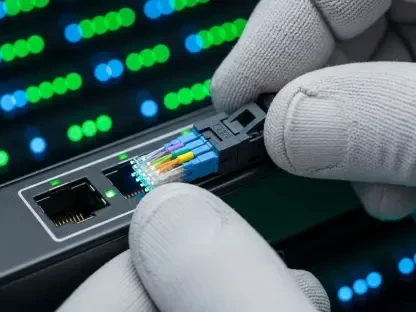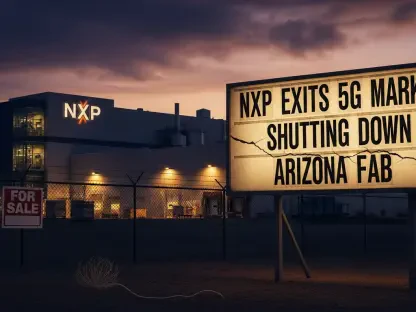In the pursuit of closing the digital divide and ensuring high-speed internet access reaches every corner of the state, Hawaiʻi has established its State Broadband Office. This new initiative has been propelled by legislation through House Bill 934, which was officially enacted with the signature of Acting Governor Lt. Gov. Sylvia Luke. The aim is not only to physically enhance the internet infrastructure across the islands but also to promote digital literacy among diverse age groups, from keiki to kūpuna. The broadband office will operate within the Department of Accounting and General Services, aligning its objectives with enhancing digital access for essential needs such as healthcare and employment. This undertaking is notably important for underserved communities that previously had limited access to reliable internet services.
Expanded Internet Access and Digital Equity
Facilitating Underserved Communities
A vital aspect of this initiative is the structural shift involving the Hawaiʻi Broadband and Digital Equity Office, previously located within the Department of Business, Economic Development, and Tourism. The decision to transfer this office demonstrates a dedicated focus on improving internet access for underserved communities. Additionally, the creation of a broadband revolving fund, with an initial deposit of $200,000, underlines the state’s financial commitment to this cause. Furthermore, $800,000 is earmarked for the employment of digital navigators. These navigators will be strategically placed in public locations, such as libraries, where they can effectively guide individuals in utilizing online services. Building on a successful pilot program initiated two years ago, this approach aims to solidify digital literacy and access in everyday community environments.
The implications of this move are vast, underpinning a significant push toward leveling the playing field in terms of digital equity. Digital navigators will play a crucial role beyond educating individuals; they will act as facilitators, helping residents navigate and harness the internet for critical services like telehealth, online education, and employment opportunities. This ensures that access is not just a matter of infrastructure, but also of usability and real-world applicability. The transition to such community-centered initiatives underscores a focus on inclusivity, aiming to integrate technology seamlessly into the lives of all residents, regardless of socioeconomic status.
Investment in Digital Navigators
The role of digital navigators has proven to be an effective means of fostering a digitally inclusive environment. Stemming from the previously mentioned successful pilot program in public libraries, the navigators’ responsibilities extend to helping individuals understand fundamental digital tasks. These navigators are tasked with providing training and support, enabling users to effectively access a wide range of online resources. These efforts strive to empower people by teaching skills that help them understand digital applications vital for day-to-day operations such as healthcare access and online job searches. By placing a strong emphasis on knowledge dissemination, the program aids in building self-reliance in digital contexts.
Equally important, this initiative addresses the gap in digital literacy that many underserved populations face. By tackling issues like limited access to digital platforms, the state ensures that increased broadband availability is coupled with the capacity for the populace to use this technology effectively. Digital navigators also act as intermediaries, addressing language barriers and technological apprehension, thereby facilitating a smoother transition into the digital world for many individuals. This provides a robust backbone for Hawaiʻi’s long-term vision of making internet access an equal opportunity across all demographics.
Challenges in Federal Funding
Effects of Federal Policy Changes
The ambitious undertaking to bolster broadband infrastructure in Hawaiʻi has faced headwinds, notably among them being changes in federal funding policies. Particularly, the withdrawal of a $6 million award from the U.S. Department of Commerce has significantly impacted ongoing and future projects aimed at expanding broadband connectivity. This federal funding cut took place under the Trump administration, adding challenges to locally driven initiatives like the Connect Kākou project. Connect Kākou, initially envisioned as a collaborative effort boasting over $400 million in mixed funding, crucially depended on $320 million from federal allocations. Any disruption in such funding streams sends ripples through contractual commitments and project timelines that are critical for development.
This sudden change in federal support has compelled state agencies to reassess and recalibrate their strategies to fulfill connectivity goals. For instance, Garret Yoshimi, the University of Hawaiʻi’s chief information officer, has expressed concerns over the sustainability of existing contracts. The ability to adapt these infrastructure initiatives to new funding realities while maintaining the intended vision for broadband delivery presents a nuanced challenge. As a response, state authorities may need to lean more heavily on private partnerships or look at alternative financing to ensure that the disruption does not derail progress toward equitable access across the islands.
Overcoming Financial Obstacles
While federal policy shifts have imposed financial challenges, Hawaiʻi remains resolute in its mission to forge ahead with its broadband enhancement plans. The state is exploring innovative solutions to mitigate the impact of reduced funding, such as fostering collaborations with private sector entities and leveraging alternative funding streams from local organizations. Identifying new partnership avenues could prove vital in reinvigorating efforts to meet connectivity goals. Moreover, strategic planning will be crucial in ensuring existing and new projects can adapt to financial constraints while still delivering on outlined objectives.
As an adaptive measure, this evolving strategy invites stakeholders from multiple sectors to participate actively in shaping an economically viable path forward. Aligning state priorities with these potential new allies could reignite momentum for the broadband initiative despite facing funding tribulations. As Hawaiʻi navigates these financial hurdles, it signals a robust commitment to achieving solid infrastructural and societal advancements. The ultimate goal persists: closing the digital divide and ensuring all residents benefit from the fruits of high-speed internet access, thus contributing to enhanced social and economic well-being across the state.
Commitment to Digital Equity
A key element in this initiative is the reorganization of the Hawaiʻi Broadband and Digital Equity Office, which was once part of the Department of Business, Economic Development, and Tourism. The move highlights a commitment to enhancing internet access for underserved areas. The state has demonstrated financial dedication by establishing a broadband revolving fund with an initial deposit of $200,000. Additionally, $800,000 is allocated for hiring digital navigators. These navigators will be stationed in public places, like libraries, to efficiently assist people in utilizing online services. Building on a successful program started two years ago, this strategy aims to bolster digital skills and access in everyday community settings.
The impact of this initiative is significant, representing a major effort to improve digital equity. Digital navigators are pivotal, not only providing education but also helping residents access essential online services like telehealth, education, and job opportunities. This ensures internet access encompasses both infrastructure and effective use. By centering efforts around the community, the initiative focuses on inclusivity, helping integrate technology seamlessly into every resident’s life, irrespective of their socioeconomic background.









